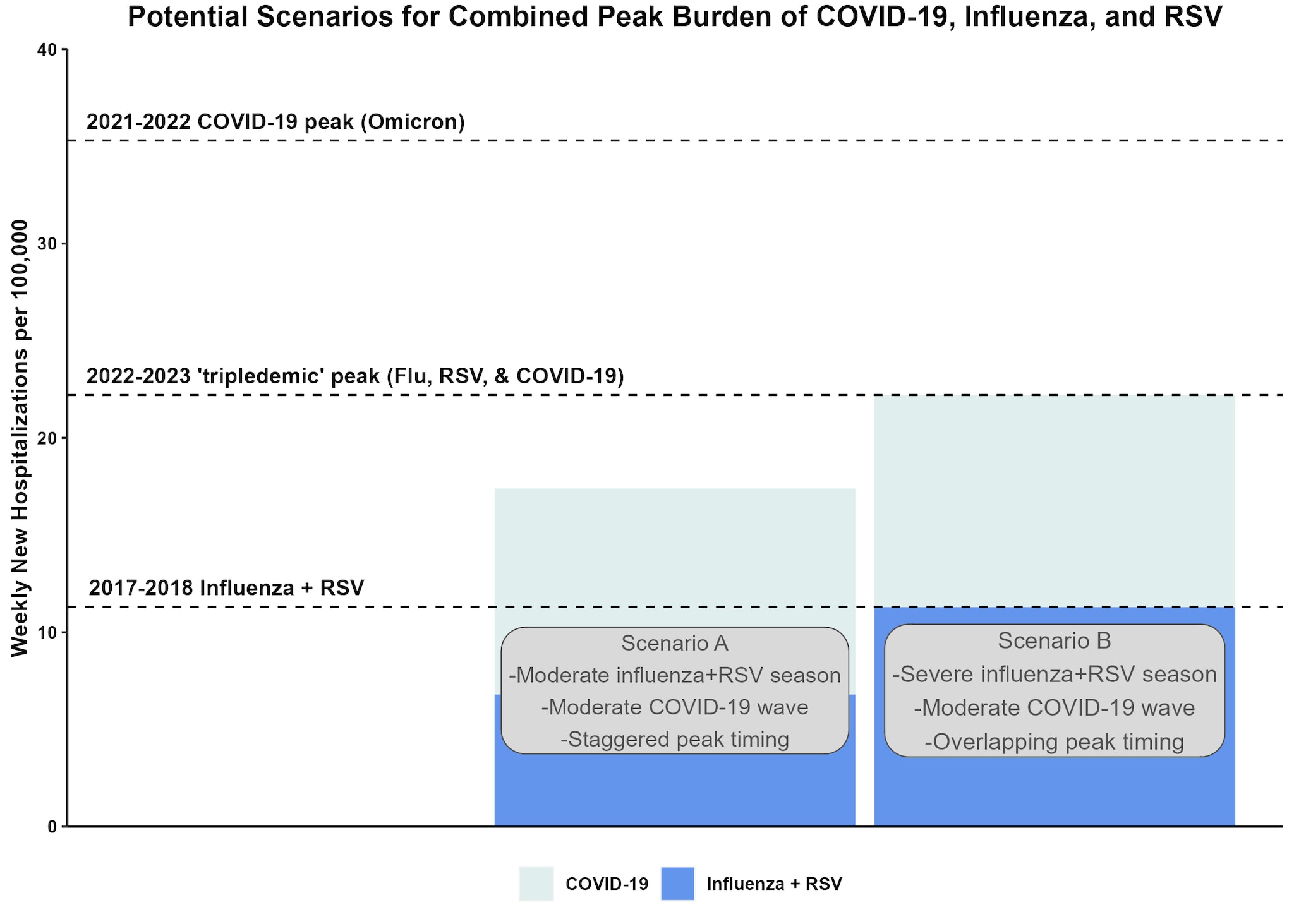Respiratory Disease Season Outlook – Summary
September 14, 2023, 11:30 AM EDT
Updates on respiratory illness and vaccine-preventable diseases.
Along with the seasonal influenza virus (flu) and the respiratory syncytial virus (RSV), COVID-19 has become a part of the respiratory virus season. Analysis from CDC’s Center for Forecasting and Outbreak Analytics shows that with the addition of a third virus (COVID-19) that can cause severe disease, even an average respiratory season can place significant strain on our healthcare system.
Fall and winter are a time when viruses that cause respiratory disease usually circulate more heavily in the community. Before COVID-19, two viruses, flu and RSV, were the main causes of severe respiratory disease during this time of year. Although some people have mild symptoms when they catch flu or RSV, others get sick enough to be hospitalized. Some seasons are more severe than others based on strains of the viruses circulating and our immunity to these viruses. One measure of the severity of a season is how many people are sick enough to be hospitalized, because this can stress the healthcare system.
CDC expects this year will be similar to last year in terms of the total number of hospitalizations from COVID-19, RSV, and flu. As with last year, the total number of hospitalizations this year is expected to be higher than what we as a nation experienced prior to the COVID-19 pandemic.
Flu activity in the United States is currently low and although the timing, intensity, and severity of the upcoming flu season cannot be predicted, it is likely to increase over the fall and winter. Flu vaccination remains the best way to protect yourself and your loved ones against flu and its potentially serious outcomes. RSV activity in the United States is also low currently and is likely to increase.
Vaccination against these respiratory viruses is important for everyone and especially for those who are at higher risk of developing serious complications, including older Americans and those with medical conditions.
As we learn more, we will update our expectations.

Figure 1: The stacked blue bars show two potential scenarios for hospitalizations related to flu, RSV, and COVID-19 this fall and winter. Dashed lines show hospitalization levels for specific viruses in previous years for comparison. These scenarios illustrate how the additional burden from COVID-19 during a moderate season for the three respiratory diseases (left bar) may generate more hospital demand than a severe influenza and RSV season prior to the emergence of COVID-19 (bottom dashed line).
The U.S. 2023-2024 flu vaccines have a similar vaccine virus composition as the 2023 Southern Hemisphere flu vaccines. A new CDC study, which looked at children and adults in five South American countries during the 2023 winter flu season (our summertime), shows flu vaccine performed well against those viruses. This study found that people who had received a flu vaccine were half as likely to be hospitalized with flu compared to people who had not been vaccinated. This finding shows that flu vaccine provides protection against serious outcomes.
For the first time in U.S. history, vaccines for all three major respiratory viruses – COVID-19, flu, and RSV – will be available this fall. Making sure that you are up to date on the vaccines recommended for you is an important strategy to prevent severe disease and protect yourself and others around you. Higher levels of vaccination across the population will also help reduce the number of hospitalizations and risk of hospital strain.
Learn more about CDC’s outlook for the upcoming respiratory disease season.